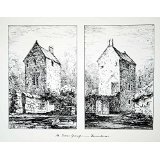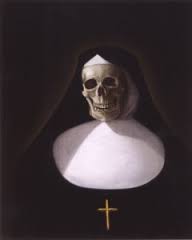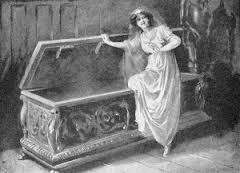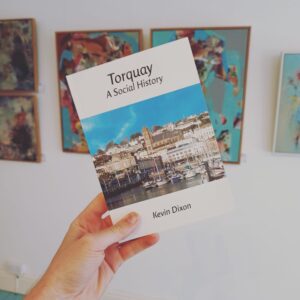Torquay’s Stoodley Knowle School purchased Ilsham Grange (now known as The Manor) in 1950 to house its Junior pupils. In its grounds stands a 13th century chapel, one of only a few surviving Premonstratensian oratories. The canons of the Abbey built the chapel in the farmyard of Ilsham Grange around 1230 as a monastic retreat.
Predictably, the Grange is associated with a legend of a Nun’s ghost.
 The story starts with a stranger visiting the Grange during the reign of Charles II. He was accommodated in a room which was reputed to be haunted. This room had oak panels and the visitor accidentally touched one, triggering a secret spring which slid back a panel revealing a cell behind it. In the cell was an oaken chest which was locked.
The story starts with a stranger visiting the Grange during the reign of Charles II. He was accommodated in a room which was reputed to be haunted. This room had oak panels and the visitor accidentally touched one, triggering a secret spring which slid back a panel revealing a cell behind it. In the cell was an oaken chest which was locked.
He then closed the panel and went to bed, to be woken by “a shriek followed by a low moaning” and the sound of a fierce struggle. He summoned the courage to investigate the cell only “to recoil as the panel was dashed open while heavy footsteps advanced into the room, though no living thing could be seen.”
The next morning he told his experiences to his host who said, “Tis’ wondrous strange! Surely you must have been deceived by a dream and yet it all agrees marvelously with the old tale”.

The ‘old tale’ was of the lady superior of the nunnery that originally occupied the grange welcoming a new novitiate said to be of high rank. A fortnight later a group of men forced their way into the nunnery and, after a search, entered the cell where the new arrival was. When they left, the cell was empty, though there was blood on the floor. The abbess declared the cell should be closed forever and it was bricked up.
When the farmer and his guest examined the hidden room again, the lid of the trunk was open. Inside they saw the moldering skeleton of a women dressed as a nun. As was often the case in traditional Christian morality tales, after the body was given a burial by the Church the hauntings ended.
However, there is a similar tragic story, ‘The Mistletoe Bough’, which turns up across England and is set in many mansions and stately homes. This tale tells of how a new bride, playing a game of hide-and-seek during her wedding breakfast, hides in a chest in an attic and is unable to escape. She isn’t discovered, and suffocates. The body is allegedly found many years later in the locked chest.
 ‘The Mistletoe Bough’ story first appeared in print in the form of a poem in 1823. In the notes on the poem the author states, “The story is, I believe, founded on fact; though the time and the place are uncertain. Many old houses lay claim to it.”
‘The Mistletoe Bough’ story first appeared in print in the form of a poem in 1823. In the notes on the poem the author states, “The story is, I believe, founded on fact; though the time and the place are uncertain. Many old houses lay claim to it.”
The popularity of the tale increased when it appeared as a song in the 1830s also entitled ‘The Mistletoe Bough’. In 1859, “its solemn chanting was referred to as a national occurrence at Christmas” in English households, and by 1862 the song was referred to as “one of the most popular songs ever written… which must be known by heart by many readers”. Further works inspired by the song include a play and several short stories.
Accordingly, the tragic story of a young woman being trapped in an old chest was well known. The Nun’s ghost of Ilsham Grange may, therefore, have originated with Torquay’s Victorian tourist guides who were known to invent or import exciting ghost stories to enhance their income – the bride becoming transformed into a Nun due to the Grange’s ecclesiastical past.
Here’s the traditional song ‘The Mistletoe Bough’:
Torquay: A Social History’ by local author Kevin Dixon is available for £10 from Artizan Gallery, Lucius Street, Torquay, or:
https://www.art-hub.co.uk/product-page/torquay-a-social-history-by-kevin-dixon





























